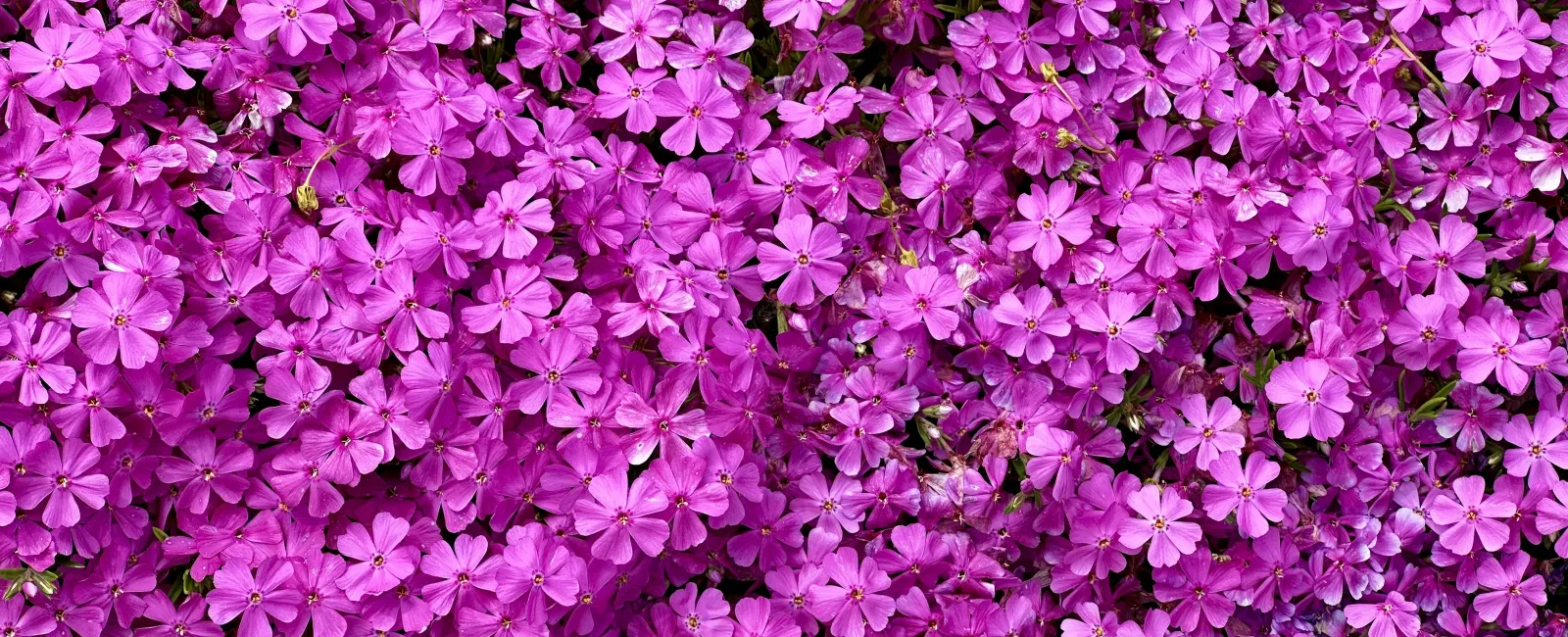Phlox flowers, with their clusters of star-shaped blooms, are a beloved staple in gardens across North America and Europe. These perennial beauties offer a riot of color and a sweet fragrance that can transform any outdoor space into a vibrant oasis. From the tall, stately varieties that stand proudly in borders to the low-growing types that create stunning ground covers, phlox plants are versatile and easy to grow. Let's dive into the colorful world of Phlox and discover why these flowers have captured the hearts of gardeners for generations.
The Allure of Perennial Phlox
Perennial Phlox is a garden powerhouse, returning year after year with its stunning display of flowers. These hardy plants are known for their long blooming period, often lasting from mid-summer to fall. Perennial Phlox is appealing because it provides a consistent burst of color when many other flowers have faded.
Imagine stepping into your garden on a warm July evening. The air is thick with the sweet scent of phlox blossoms, and a sea of pink, purple, and white flowers sways gently in the breeze. This magic of perennial Phlox creates an enchanting atmosphere that can transform an ordinary garden into something extraordinary.
Phlox Color Palette: A Rainbow in Your Garden
One of the most exciting aspects of growing Phlox is the incredible range of colors. Phlox offers a color for every garden palette, from pure white to deep purple and every shade in between. Here's a glimpse into the rainbow of phlox colors you can choose from:
- Soft pastels: Delicate pink, lavender, and pale blue
- Vibrant hues: Bright red, hot pink, and electric purple
- Classic shades: Crisp white, sunny yellow, and coral
- Bicolors: Striking combinations like white with a red eye or pink with a darker center
The versatility of phlox color options means you can easily incorporate these flowers into any garden design. Whether you're creating a monochromatic white garden for moonlit evenings or a bold, mixed border bursting with color, there's a phlox variety to suit your vision.
Types of Phlox: From Ground Covers to Tall Beauties
Phlox is not a one-size-fits-all plant. There are several types of Phlox, each with its unique characteristics and uses in the garden. Let's explore some of the most popular varieties:
- Tall Garden Phlox (Phlox paniculata)
- Height: 2-4 feet
- Blooms: Large clusters of flowers
- Best for: Back of borders, cut flowers
- Creeping Phlox (Phlox subulata)
- Height: 4-6 inches
- Blooms: Mat-forming with small flowers
- Best for: Rock gardens, ground cover
- Woodland Phlox (Phlox divaricata)
- Height: 12-18 inches
- Blooms: Loose clusters of fragrant flowers
- Best for: Shade gardens, naturalizing
- Annual Phlox (Phlox drummondii)
- Height: 6-12 inches
- Blooms: Variety of colors, all season
- Best for: Quick color, container gardens
Each type of Phlox has its charm and can create different effects in your garden. With its impressive height and large flower clusters, the tall garden phlox makes a stunning backdrop for other perennials. On the other hand, Creeping Phlox can cascade over walls or spread across rocky areas, creating a carpet of color in spring.
Cultivating Phlox: Tips for Success
Growing Phlox is relatively straightforward, but there are a few key points to remember to ensure your plants thrive. Whether you're a seasoned gardener or just starting, these tips will help you cultivate beautiful, healthy Phlox:
Sunlight and Soil
Most phlox varieties prefer full sun to partial shade. Tall garden phlox, in particular, blooms best with at least 6 hours of direct sunlight daily. However, some afternoon shade can prevent the flowers from fading quickly in hotter climates.
Phlox plants are not too fussy about soil but appreciate well-draining, fertile soil. Before planting, enrich your garden bed with compost or well-rotted manure to give your Phlox the best start.
Watering and Feeding
Phlox plants prefer consistent moisture, especially during the growing season. Water deeply once a week or more frequently during dry spells. However, be careful not to overwater, which can lead to root rot and fungal diseases.
Feed your phlox plants with a balanced, slow-release fertilizer in early spring to encourage abundant blooms. A second application in mid-summer can help prolong the flowering period.
Maintenance and Care
To keep your Phlox looking their best:
- Deadhead spent blooms regularly to encourage more flowers
- Divide tall garden phlox every 3-4 years to maintain vigor
- Provide good air circulation to prevent powdery mildew
- Mulch around plants to retain moisture and suppress weeds
Following these simple care instructions will reward you with healthy, vibrant phlox plants that return year after year.
Phlox in Outdoor Landscaping: Design Ideas
Phlox flowers are incredibly versatile in landscape design. Their wide range of colors and growth habits can be incorporated into almost any garden style. Here are some inspiring ways to use Phlox in your outdoor space:
Cottage Garden Charm
Tall garden phlox is a must-have in a cottage-style garden. Plant them in groups of three or five among other perennials like coneflowers, black-eyed Susans, and daisies. Phlox's informal, abundant look fits perfectly with the relaxed atmosphere of a cottage garden.
Modern Minimalism
Use creeping Phlox to create bold sweeps of color for a more contemporary look. Plant a single variety in large drifts across a slope or as a ground cover beneath modern sculptural plants like ornamental grasses or yuccas.
Woodland Wonder
Woodland phlox can create a magical, forest-like atmosphere in a shady garden. Plant them in drifts under deciduous trees, where they'll bloom before the canopy fills in. Pair them with other shade-loving plants like ferns, hostas, and astilbes for a lush look.
Rock Garden Stunner
Creeping Phlox is a rock garden superstar. Plant it between stones or allow it to spill over retaining walls. Its low-growing habit and profusion of spring flowers make it ideal for adding color and texture to rocky areas.
The Benefits of Growing Phlox
Beyond their obvious beauty, phlox plants offer several benefits to your garden ecosystem:
- Pollinator-friendly: The nectar-rich flowers attract butterflies, bees, and hummingbirds
- Low maintenance: Once established, Phlox requires minimal care
- Long-lasting: With proper care, phlox plants can live for many years
- Versatile: Suitable for various garden styles and growing conditions
- Cut flowers: Tall varieties make excellent cut flowers for bouquets
Embracing the Beauty of Phlox in Your Garden
From the towering spires of tall garden phlox to the cascading blooms of creeping varieties, these versatile perennials offer something for every gardener. Their vibrant colors, sweet fragrance, and easy-care nature make them a joy to grow and a valuable addition to any outdoor space.
As you plan your garden, consider incorporating different types of Phlox to create a dynamic and colorful landscape. Whether you're looking to attract pollinators, add height to your borders, or create a stunning ground cover, Phlox has you covered.
Ready to bring the beauty of Phlox to your garden? Visit your local nursery or garden center to explore the variety of phlox colors and types available. With some care and attention, you'll soon enjoy these garden favorites' vibrant blooms and sweet scent for years.





